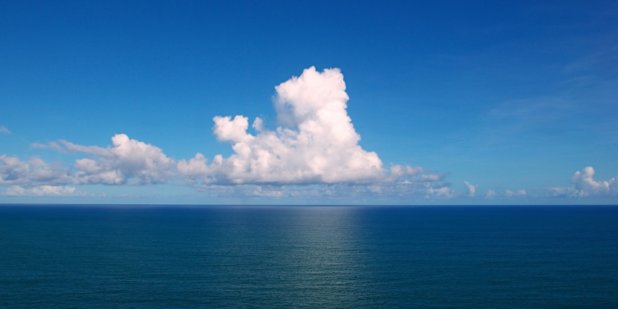- About
- Topics
- Story
- In-Depth
- Picks
- Opinion
- News
- Donate
- Signup for our newsletterOur Editors' Best Picks.Send
Read, Debate: Engage.
What is regarded as the worst drought in a century is currently forcing the most stringent water restrictions ever implemented in South Africa's second-largest city. Cape Town has less than 10 percent of its useable water remaining for its nearly 4 million residents.
South Africa is the 30th driest country in the world, and the country has a long history of grappling with droughts. A drought during the early 1930s that coincided with the great depression made a deep impression on many policy makers. Drought has been cited as a prime catalyst in contributing to significant historical changes. It is a regular and recurrent feature of South African climate. Its impact on society depends on its intensity but also on its duration.
Speaking to CNN, Cape Town Executive Mayor Patricia de Lille explained her concerns about the growing water crisis: “Climate change is a reality and we cannot depend on rainwater alone to fill our dams, but must look at alternative sources like desalination and underground aquifers. The reality is that the current water crisis in Cape Town shouldn't be treated as a short-term occurrence, but rather as a long-term problem”.
South Africa's rainfall varies greatly. Seasonal rainfall percentage deviations since 1960 demonstrate wide fluctuations about the long-term average and it is in this context that large rainfall deficits must be assessed. South Africa experiences spells of either predominantly wet years or spells of predominantly dry years and these spells have not affected regions of this country exactly the same or equally. For instance, from 2009 to 2011 the Southern Cape Region was devastated by a severe drought while the rest of the country generally received above-normal rainfall. Since the 1990s, the country has lost a third of its farms due to water scarcity. As a result, some farmers have had to turn to a hi-tech solution to help cope with dwindling water supplies and harsher environments. The most serious impact, other than dwindling water supplies, is the effect on staple crops and, ultimately, commercial crops. During the year 1992 and 1993, undoubtedly one of the most widespread droughts of the last 45 years, maize had to be imported to South Africa.
“Drought is a relatively complex concept, particularly the hydrological drought. And it is the hydrological drought that affects Cape’s dams. A hydrological drought may be a result of a nuanced interplay of characteristics of the rainy season such as timing, magnitude and intensity of rainfall events. So in theory, to quantify the current drought, one would need to translate these rainfall characteristics into hydrological responses such as surface and groundwater runoff, combine them into inflow to the reservoirs or dams and take into account the actual evaporation as well as the dynamics of water abstractions,” said hydrologist and blogger Piotr Wolski.
During the late 80s, there was an increasing concern about the ineffectiveness of current drought management practices that are largely based on crisis management. These practices are reactive and, therefore, only treat the symptoms (impacts) of drought rather than the underlying causes for the vulnerabilities associated with impacts. Part of the difficulty in addressing drought in South Africa is the large proportion of the population that depends on rainfed subsistence agriculture. This sector relies heavily on the success of the rainy season to maintain adequate stocks of food. Historically, the infrastructure development and records maintenance in these areas have been neglected, which has made it difficult to monitor food status.
However, an era of a more proactive, disaster risk management approach in South Africa began to emerge in the late 1990s. This was triggered by fundamental changes in the political dispensation, with the move from apartheid to more democratic forms of governance also occurring at a time of severe flooding and droughts. In 1992, for example, during which time a severe drought gripped the country, a National Consultative Forum on Drought was established that began to investigate drought impacts in several parts of the country.
The recent ‘Cape Town’ drought seem to enforce the government’s ability‚ at all levels‚ to plan realistically and respond to emergency situations appropriately. Not satisfied with glib answers or spin-doctoring the public is interrogating the reasoning and planning in a way that demonstrates a deeper understanding of the issues. Only now does the public starts to think in terms of ‘can you really flush with seawater?’
Smart strategies against risks meanwhile, the Western Cape department of agriculture had since launched a Smart Agri Plan to manage climate change. “Agriculture must now be managed according to smart practices. The normal way of doing it is gone forever. Conservation farming is one of the fundamental changes that should be followed. The climate is expected to become drier in many regions that currently depend on irrigation,” said Agri SA’s executive director, Omri van Zyl.
Drought is a natural hazard of South Africa's climate, and it is expected to worsen with climate change projections. A challenge remains for the South African government: to maintain a policy balance between encouraging a risk management approach for large agricultural enterprises and providing a safety net for the resource-limited sectors of the population. Therefore, the country needs to prepare for this natural phenomenon.
This article was originally published on FairPlanet on 28 February, 2018.
